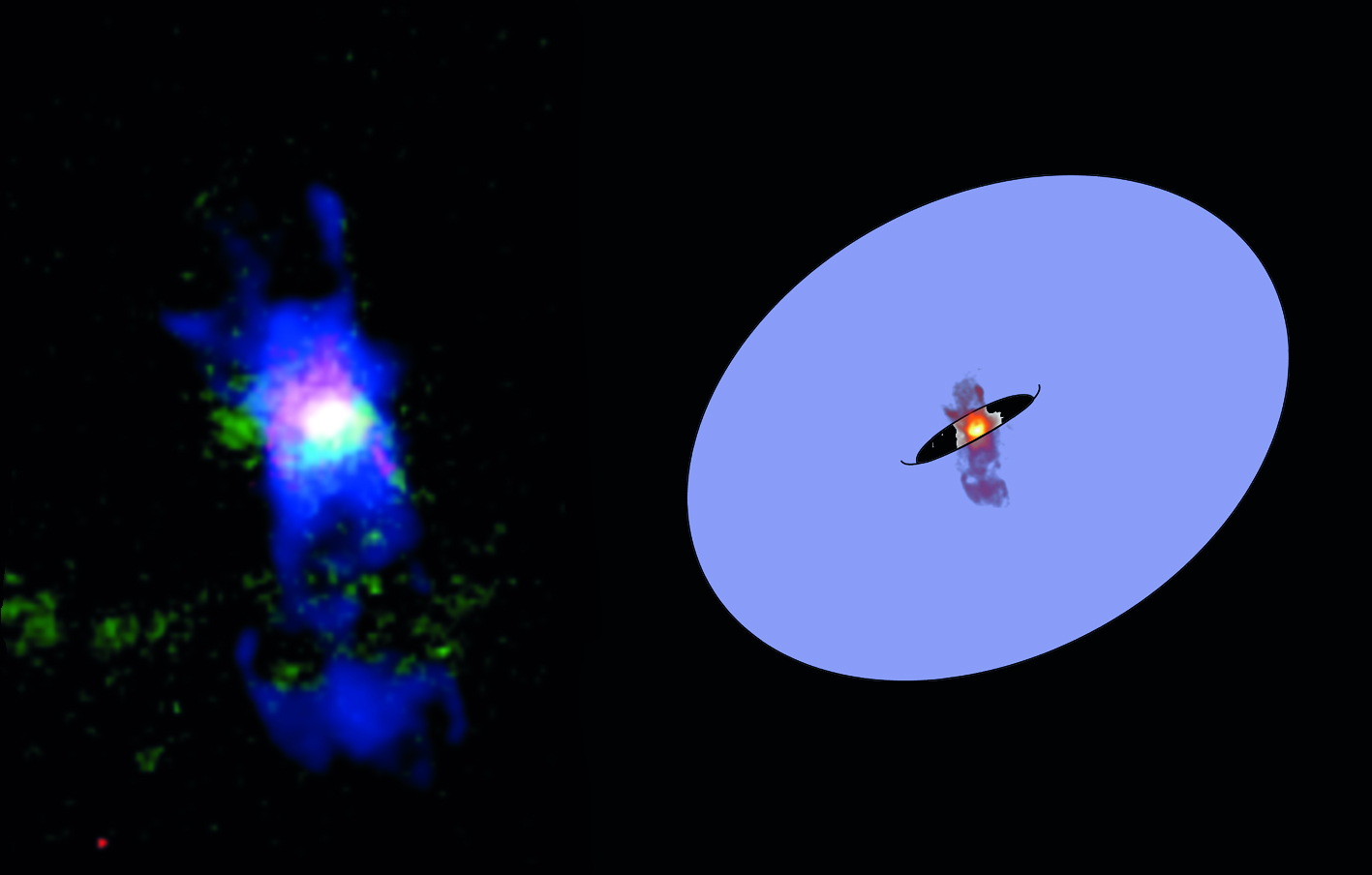Gigantic gas outflow generated by numerous supernova explosions detected in Arp 299-A galaxy
Arp 299-A galaxy, which is in the process of merging with another galaxy (Arp299-B), is notable for its intense starbursts and its high rate of supernova production. New observations in radio have allowed to detect a filamentary structure that emanates from the nucleus, which is interpreted as a flow of gas at high speed
An international group of astronomers, led by the Institute of Astrophysics of Andalusia (IAA-CSIC), has detected, thanks to observations with the radiotelescope network LOFAR, a huge outflow of material that emerges from the central regions of Arp 299-A, a galaxy in an early stage of merging.
"At the IAA, we have been researching this galaxy for years, which due to the interaction with the companion galaxy is generating intense starbursts," says Naím Ramírez-Olivencia, an IAA researcher who leads the study. "It is, therefore, a very interesting because it allows us to study almost in real time how stars are born, die and interact with the surrounding environment".

In fact, one of the most interesting features of this galaxy is, precisely, its high rate of supernova production, the result of the death of stars with more than eight times the mass of the Sun: if in a galaxy such as the Milky Way is expected a supernova every fifty years, it is estimated that in Arp 299-A occurs around one per year.
AN UNEXPECTED DISCOVERY
However, the discovery of a huge material outflow, which extends over nine thousand light years and releases a minimum of ten solar masses per year at a speed of between 370 and 890 kilometers per second, has come as a surprise.
The group of researchers worked with the two possible mechanisms that could activate the outflow: the supermassive black hole at the galactic nucleus, which generates energy by accumulating material in a disk around it, or the activity generated by the stars, especially by the supernova explosions.
The calculations point to this second mechanism, since the activity generated by the supernovae supposes an energy ten times greater than that generated by the system composed of the central supermassive black hole and its accretion disk, whose orientation also does not match that observed in the material outflow.
"This is the first work led by Spanish researchers with the LOFAR radiotelescope network. Also, it is an achievement for the instrument as it is presented as a tool to study structures of this type, very difficult to observe at other wavelengths", concludes Naím Ramírez-Olivencia (IAA-CSIC).
N. Ramírez-Olivencia et al. "Sub-arcsecond imaging of Arp 299-A at 150 MHz with LOFAR: Evidence for a starburst-driven outflow". Astronomy & Astrophysics 610, L18 (2018) DOI: https://doi.org/10.1051/0004-6361/201732543
Instituto de Astrofísica de Andalucía (IAA-CSIC)
Unidad de Divulgación y Comunicación
Silbia López de Lacalle - sll[arroba]iaa.es - 958230532
http://www.iaa.es
http://www-divulgacion.iaa.es

